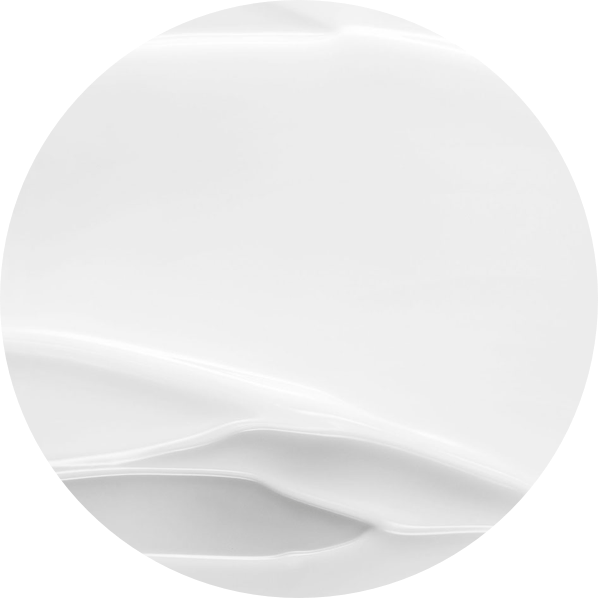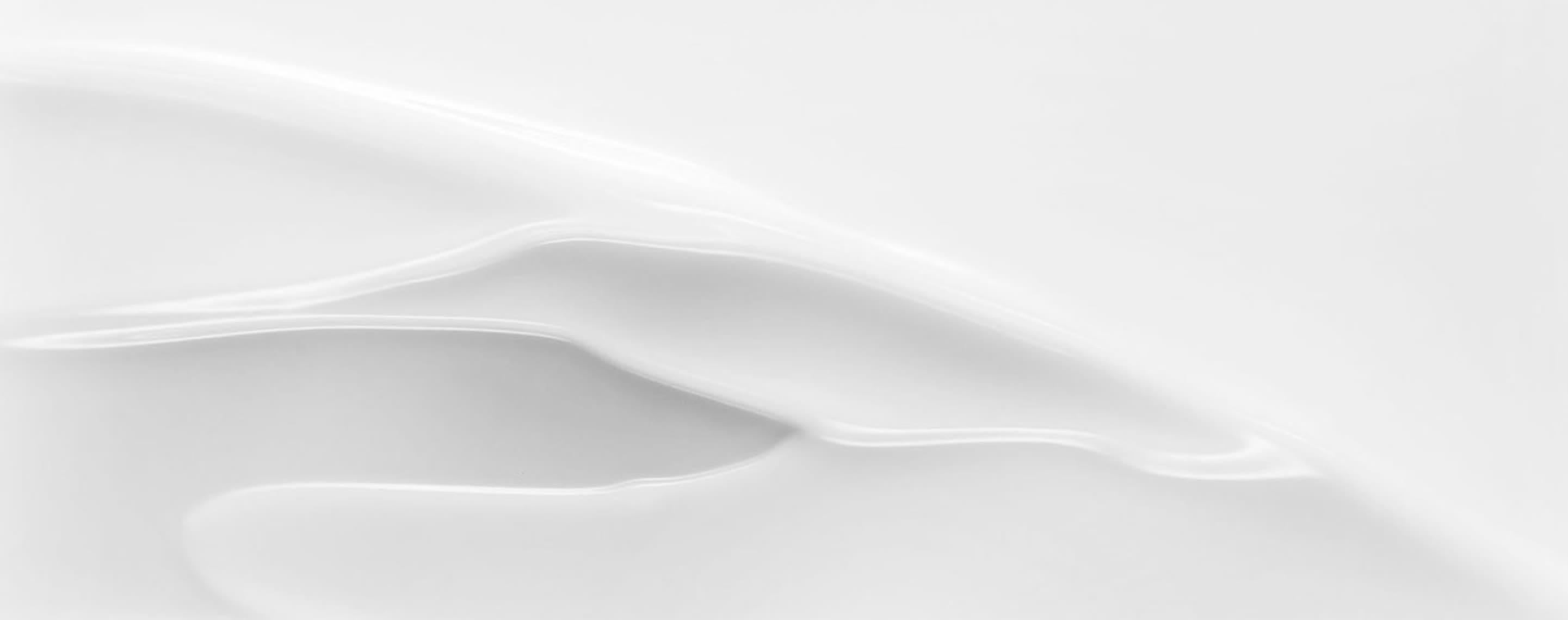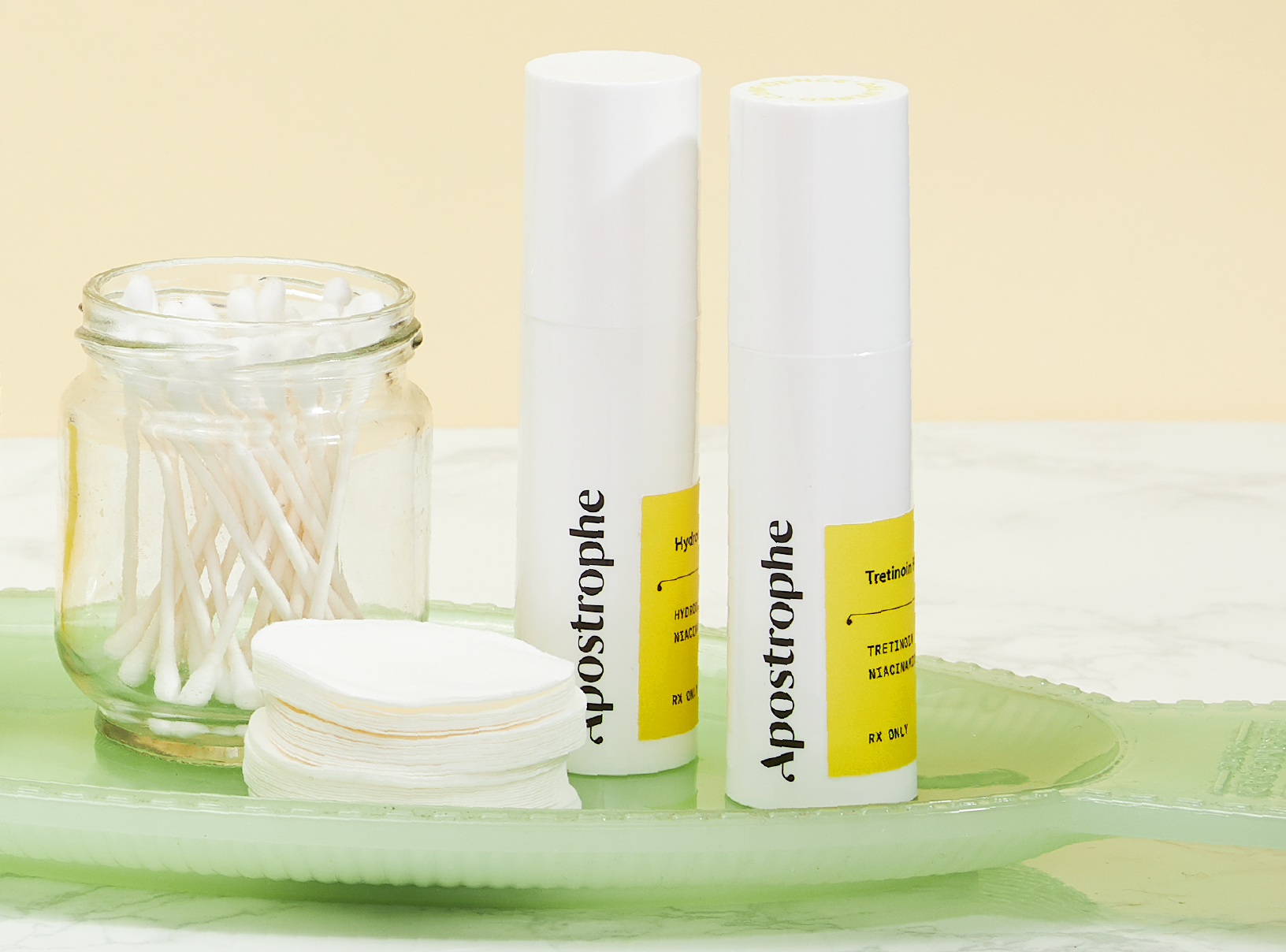Apostrophe Treatments
What does niacinamide do?


SHARE
Apostrophe Treatments
What does niacinamide do?
Medically reviewed by Katelyn Hagerty FNP
Written by Apostrophe Team
Last updated 4/1/2024
Niacinamide is one skincare ingredient with as many benefits as it has syllables.
Despite appearing to have gained popularity in the last few years, this ingredient has been around for many years, offering support against mild to severe skincare conditions like acne and sun damage.
We'll be learning about niacinamide, its benefits, what side effects could occur from its use, and the best ways to use this skincare ingredient.
What Is Niacinamide?
Niacinamide is a B3-vitamin, one of the many vitamins your body can't produce.
To get your supply of this essential, water-soluble nutrient, you’ll have to look toward external sources, like bran, yeast, eggs, legumes, red meat, poultry, green leafy vegetables, etc.
Try to commit these food options to memory, or at least have Google on standby.
As a water-soluble nutrient, your body’s surplus niacinamide isn’t stored in your body.
Instead, it’s washed away every time you short flush. This makes it extra important to have a diet rich in foods that contain niacin. Without sufficient amounts of this nutrient, you have an increased risk of developing pellagra, dementia, diarrhea, and dermatitis.
And speaking of niacin — while they share the same first six letters, this nutrient is different from niacinamide. They are, however, similarly effective as vitamins, especially because either can be converted to the other.
Niacinamide is available in oral or topical form.
Benefits of Niacinamide
There are two reasons niacinamide is pegged as such a great skincare ingredient.
Niacin, from where niacinamide is derived, is a precursor to two very important cofactors: nicotinamide adenine dinucleotide (NAD+/NADH) and nicotinamide adenine dinucleotide phosphate (NADP+).
We know the medical jargon is flowing, but stay with us here.
A precursor is a compound that participates in a chemical reaction to produce another compound, while “cofactors” simply refer to non-protein compounds that push your body's enzymes to work.
These listed co-factors are very important for your skin cells — or any cells really.
They help with the repair and normal function of your body's cells, which wouldn't be possible without niacinamide.
Here is how nicotinamide improves the skin:
1. It improves collagen production
If there's one nutrient you and your skin should always have in regular supply, it's collagen.
Collagen is a protein — the most abundant protein in the extracellular matrix, in fact — that makes up an essential part of the extracellular matrix. It provides necessary support to your cells, as well as the components that keep your cells running.
Collagen determines the appearance of your skin by maintaining the skin structure. It ensures that the skin retains water, and has a smooth, firm, and strong look.
2. Niacinamide helps in managing acne
If you have acne or acne-prone skin, you're probably aware that sebum/oil is one of the hateful enemy agents responsible for your skin condition.
Throw in inflammation and bacteria and you have the trifecta of acne causes.
And wouldn’t you know it? Niacinamide just so happens to have sebum-regulatory abilities. It manages how much sebum your oil glands produce, to prevent them from getting a little too enthusiastic.
It is also recognized for being anti-inflammatory and having antimicrobial properties. This makes it a really great treatment for acne.
3. This ingredient helps to reduce the appearance of age on your skin
Fine lines, wrinkles, sagging skin? Niacinamide also has some research backing its effectiveness in reducing the appearance of aging on your skin.
While it still isn't clear just what it is about niacinamide that makes it effective against aging skin, there is a belief that the topical application of niacinamide reduces transepidermal water loss (water evaporated from the skin to the atmosphere), and improves the moisture content of your skin after sun damage.
Niacinamide may also be able to reduce the appearance of age on your skin by elevating histone acetyltransferase activity (HAT). Histones typically provide support to cells, but are slowed down as we get older. Niacinamide's help in producing collagen could also be a factor in reducing the appearance of age in the skin.
In a study carried out on 30 Japanese women between the ages of 31 and 49, volunteers used a cosmetic containing 4% niacinamide for two months to determine the anti-wrinkle effects of the vitamin.
By the end of the study, the women experienced significant reduction to their wrinkles.
4. Niacinamide decreases yellowing skin
Because your skin is full of surprises as you get older, you may notice yellowing skin as you advance in age. This sallow discoloration could result from oxidative stress to the skin.
Luckily, niacinamide may help. For instance, because of its antioxidant properties, niacinamide may manage instances of oxidative stress like protein oxidation, which happens when protein reacts with byproducts of oxidative stress or harmful reactive oxygen species.
Likewise, it may also help manage glycation, which occurs when there is excess sugar in skin fibers.
These processes can cause the skin to yellow. However, niacinamide may be useful in managing it.
5. It helps in reducing hyperpigmentation
Hyperpigmentation is the appearance of darker patches on your skin. It can be caused by sun damage, inflammation, and other skin injuries. This can cause the transfer of melanin to the surrounding keratinocytes, which are cells found on the outer layer of your skin.
Niacinamide can reduce the appearance of hyperpigmentation by reducing melanosome transfer from melanocytes which are responsible for giving your skin color through melanin.

HYPERPIGMENTATION TREATMENT
Target dark spots and hyperpigmentation with customized prescription treatment.
6. Niacinamide promotes skin barrier function
Give your skin a quick rub. Feels nice, doesn't it? You have ceramides (among others) to thank for their roles in providing your skin with moisture and preserving barrier function.
Ceramides are produced in your body, but their levels reduce as you age. Niacinamide is able to promote the increased production of this lipid.
Likewise, this B3 vitamin helps with the building of keratin, a protein necessary for healthy skin.
7. It may help protect against sun damage
While a little early morning sun can feel great on the skin, extended exposure to the sun's UVA and UVB rays can cause photoaging of your skin.
Even worse, these rays could lead to skin cancer, owing to their ability to cause direct cell damage or local inflammatory responses, as well as the suppression of your skin's tumor immunity.
Some research has explored the efficacy of niacinamide in the repair of UV damaged skin cells and UV-induced inflammation, as well as the depletion of cell energy caused by exposure to UVA and UVB rays. As an added bonus, nicotinamide could also protect your skin against UV induced immunity suppression.
Niacinamide has also been linked to the treatment of neurodegenerative diseases like Alzheimer's, Parkinson's disease and Huntington's disease. It may also be useful in the treatment of osteoarthritis.
Side effects of niacinamide
Niacinamide is largely safe for use. However, if you're on an oral supplementation of this vitamin, you might want to slow it down at around 500mg or more per day. This can cause diarrhea, easy bruising, and can increase bleeding from wounds. Higher doses of 3000mg/day or more can cause nausea, vomiting, and liver damage.
In conclusion
Niacinamide is an ingredient power-packed with benefits for your skin.
Its anti-inflammatory, anti-bacterial, and possible anti-carcinogenic properties are just some of the benefits that have placed this B-vitamin in lotions, creams, serums, and headbands if we let it!
Most notably however, niacinamide has fantastic anti-aging properties, if you're looking to reduce the appearance of fine lines and wrinkles on your skin, many Apostrophe topical treatments have niacinamide in their formula.
References
Peechakara BV, Gupta M. Vitamin B3. In: StatPearls [Internet]. Treasure Island (FL): StatPearls Publishing; 2021 Jan. Retrieved from: https://www.ncbi.nlm.nih.gov/books/NBK526107/
Forbat, E., Al-Niaimi, F., & Ali, F. R. (2017). Use of nicotinamide in dermatology. Clinical and experimental dermatology, 42(2), 137–144. Retrieved from: https://www.researchgate.net/publication/312046459_Use_of_nicotinamide_in_dermatology
Gehring W. (2004). Nicotinic acid/niacinamide and the skin. Journal of cosmetic dermatology, 3(2), 88–93. Retrieved from: https://www.researchgate.net/publication/6650737_Nicotinic_acidniacinamide_and_the_skin
Braidy, N., Berg, J., Clement, J., Khorshidi, F., Poljak, A., Jayasena, T., Grant, R., & Sachdev, P. (2019). Role of Nicotinamide Adenine Dinucleotide and Related Precursors as Therapeutic Targets for Age-Related Degenerative Diseases: Rationale, Biochemistry, Pharmacokinetics, and Outcomes. Antioxidants & redox signaling, 30(2), 251–294. Retrieved from: https://www.ncbi.nlm.nih.gov/pmc/articles/PMC6277084/
Agledal, L., Niere, M., & Ziegler, M. (2010). The phosphate makes a difference: cellular functions of NADP. Redox report : communications in free radical research, 15(1), 2–10. Retrieved from: https://www.ncbi.nlm.nih.gov/pmc/articles/PMC7067316/pdf/YRER_15_11727468.pdf
Walocko, F. M., Eber, A. E., Keri, J. E., Al-Harbi, M. A., & Nouri, K. (2017). The role of nicotinamide in acne treatment. Dermatologic therapy, 30(5), 10.1111/dth.12481. Retrieved from: https://pubmed.ncbi.nlm.nih.gov/28220628/
Kawada, A., Konishi, N., Oiso, N., Kawara, S., & Date, A. (2008). Evaluation of anti-wrinkle effects of a novel cosmetic containing niacinamide. The Journal of dermatology, 35(10), 637–642. Retrieved from: https://onlinelibrary.wiley.com/doi/full/10.1111/j.1346-8138.2008.00537.x
Pandel, R., Poljšak, B., Godic, A., & Dahmane, R. (2013). Skin photoaging and the role of antioxidants in its prevention. ISRN dermatology, 2013, 930164. Retrieved from: https://www.researchgate.net/publication/258044079_Skin_Photoaging_and_the_Role_of_Antioxidants_in_Its_Prevention
Levin J, Momin SB. How much do we really know about our favorite cosmeceutical ingredients?. J Clin Aesthet Dermatol. 2010;3(2):22-41. Retrieved from: https://www.ncbi.nlm.nih.gov/pmc/articles/PMC2921764/
Like what you just read? Sign up for our email list to get the scoop on skincare science delivered straight to your inbox.

Education
What is milia?
What is milia? Today, we’re jumping into one type of bump that you may have heard about most commonly in infants — milia.
Read More
Education
Best moisturizer for acne-prone skin
If you have combination acne-prone skin, figuring out which moisturizer is best for your skin might be tough. In this guide, we break down the best moisturizer for combination, acne-prone skin.
Read More
Education
How to build a face care routine
As you get into skincare, it might seem overwhelming, especially trying to figure out the order you're supposed to apply products in. Below, we detail how to build a face care routine for your skin!
Read More